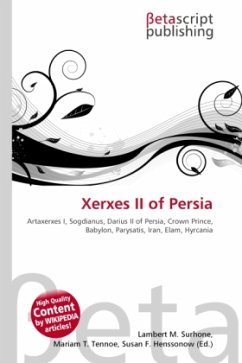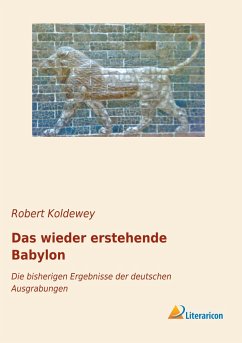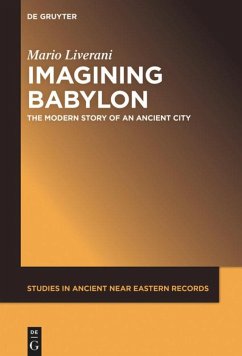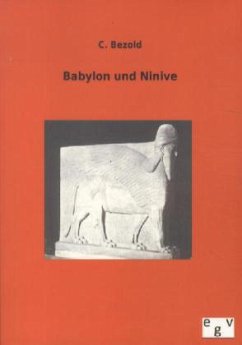
Esagila
Versandkostenfrei!
Versandfertig in 6-10 Tagen
23,99 €
inkl. MwSt.

PAYBACK Punkte
12 °P sammeln!
High Quality Content by WIKIPEDIA articles! The Ésagila, a Sumerian name signifying "É (temple) whose top is lofty", (literally: "house of the raised head") was a temple dedicated to Marduk, the protector god of Babylon. It lay south of the ziggurat Etemenanki, a memory of which has been perpetuated in Judeo-Christian culture as the Tower of Babel. In this temple was the cult image inhabited by Marduk, surrounded by cult images of the cities that had fallen under the hegemony of the Babylonian Empire from the 18th century BC; there was also a little lake which was named Abzu by the Babylonia...
High Quality Content by WIKIPEDIA articles! The Ésagila, a Sumerian name signifying "É (temple) whose top is lofty", (literally: "house of the raised head") was a temple dedicated to Marduk, the protector god of Babylon. It lay south of the ziggurat Etemenanki, a memory of which has been perpetuated in Judeo-Christian culture as the Tower of Babel. In this temple was the cult image inhabited by Marduk, surrounded by cult images of the cities that had fallen under the hegemony of the Babylonian Empire from the 18th century BC; there was also a little lake which was named Abzu by the Babylonian priests. This Abzu was a representantion of Marduk's father, Enki, who was god of the waters and lived in the Abzu that was the source of all the fresh waters. The Esagila complex, completed in its final form by Nebuchadrezzar II (604 562 BC) encasing earlier cores, was the center of Babylon. It comprised a large court (ca. 40×70 sq. meters), containing a smaller court (ca. 25×40 m2), and finally the central shrine, consisting of an anteroom and the inner sanctum which contained the statues of Marduk and his consort Sarpanit.












